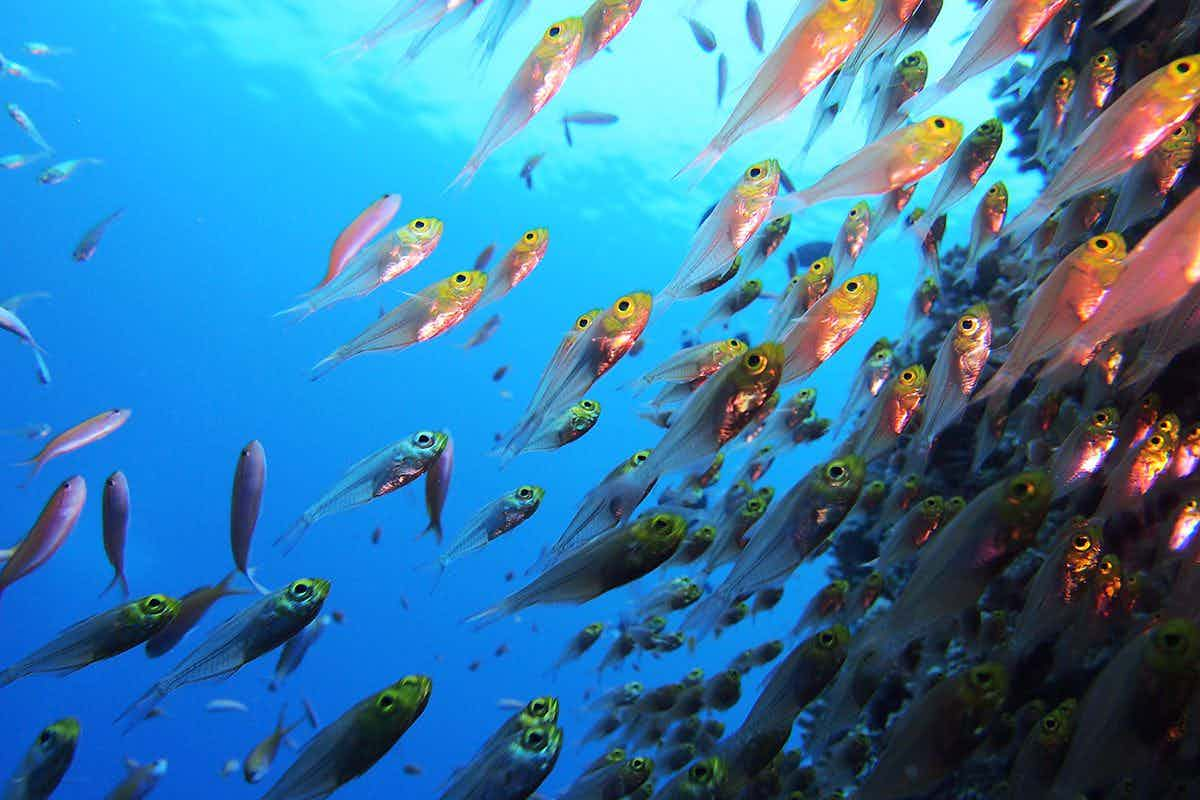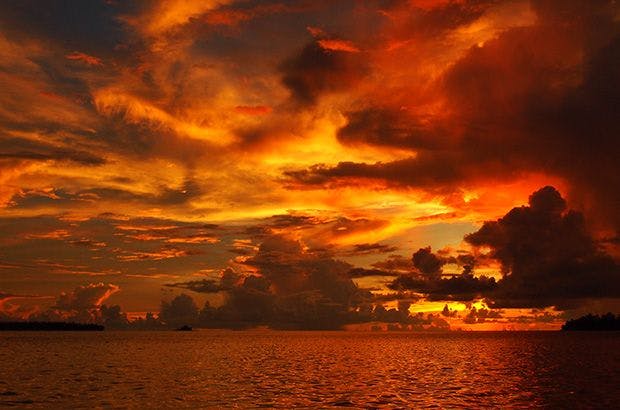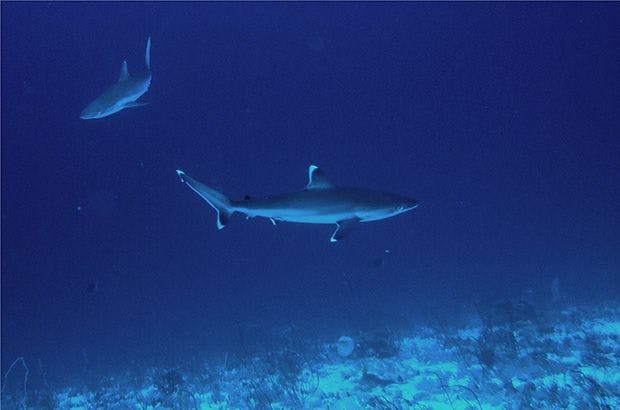Interviews, NatureSafeguarding The Dream

The Chagos Archipelago Marine Protected Area
Every surfer dreams of finding their own perfect wave breaking just off the coast of a deserted island – it’s a part of our collective unconscious. In 1973 Tony Hinde and Mark Scanlon proved it was possible (and set the bar real high) when they were shipwrecked in the Maldives, and many surfers across this blue planet are still chasing that dream. That dream, however, is under threat.
Those dream waves that we all doodled on our school exercise books most likely break over a reef, and in the tropics those reefs are live coral and form the building blocks for a diverse and healthy marine ecosystem. Coral reef ecosystems throughout the tropics are threatened by a multitude of physical pressures however, and the various effects of climate change are increasingly endangering the atolls and islands that they surround. The world’s oceans are great at absorbing and diluting the various effects of increases in temperature or acidity, perhaps too great, and scientists are concerned that by the time we recognize dangerous changes in the oceans, it will be too late.
In 2010 the British Government established the Chagos Archipelago in the central Indian Ocean as the world’s largest marine reserve, a “no take” zone larger than France or the state of California. Whilst the political backstory to the designation of these 640,000 square kilometers of ocean as an Environmental Preservation and Protection Zone (EPPZ) is certainly questionable, the positive environmental impacts, now and in the future, are difficult to contest.
The Chagos Archipelago is a group of seven atolls (made up of over 60 individual tropical islands) situated a little over 300 miles south of the Maldives. It is officially a part of the British Indian Ocean Territory, however the sovereignty of the Chagos is disputed by Mauritius, from whom the archipelago was excised prior to Mauritius gaining its independence in 1965. Between 1967 and 1973 the five hundred or so Chagossian islanders were evicted, mostly from the atoll-island of Diego Garcia, and relocated to Mauritius or the Seychelles to allow the construction of a joint United States-United Kingdom military base on that island.
Situated in the center of the Indian Ocean, the Chagos Marine Protected Area enjoys virtually no direct impact from human activities (aside from the single military base on Diego Garcia) and can therefore be used by the scientific community as a reference site. The impacts of climate change, overfishing, ocean acidification, and other such knock on effects from the industrialised world can be measured against the reefs of the Chagos Archipelago, which are still in excellent condition.
To find out more about the research being undertaken on the Chagos, and to learn about what their findings mean to ocean lovers around the world, we caught up with scientist Dr. Sam Purkis from the Chagos Conservation Trust – U.S. (cctus.org), a voluntary charitable organization that promotes conservation and related science and education regarding the Chagos Archipelago.

Sam, what do the Chagos reefs represent to the worldwide scientific community?
Scientific study of the Chagos marine environment offers an unparalleled opportunity to conserve and protect the vast coral reefs that reside elsewhere on Earth. Since climate change is global, the Chagos reefs are also being affected, but unlike the reefs of the majority of the rest of the world, Chagos is spared the added environmental pressures associated with human activity: over fishing, pollution, invasive species, careless tourism, sedimentation, coral mining, and so on. For this reason, Chagos can serve as a unique reference against which we can gauge how an undisturbed coral reef should function in the face of climate change.
And what about to humanity as a whole?
Coral reefs are particularly susceptible to changing climate. In fact, we’ve lost up to half of them since the 1970’s. This so called “reef crisis” is, of course, the canary in the coal mine – a degraded coral reef speaks more of how much trouble the world’s oceans are in. If we can gather political will and public action to save the planet’s reefs, I truly believe that humanity has a fighting chance to address the seemingly insurmountable environmental challenges that we currently face. Large-scale ocean wilderness areas, such as the Chagos protected area, are an important step down this path.
Why is the Chagos Marine Protected Area so special?
While expeditions to Chagos are rare, without fail, each has yielded striking new discoveries – unsurprising perhaps, because the area is so vast and so little of it has been studied. Recent publications stress the need to maintain life-support services, with appeals from many scientists to create more, larger, and strictly marine protected areas. Comparisons between more than 90 marine protected areas worldwide suggest that benefits increase exponentially with the accumulation of five key features: being no-take, being well enforced, being old (established for more than 10 years), being large, and finally, being isolated by deep water. This last one in essence means distance from human impact and, in this regard, the Chagos MPA is an incredible, albeit understudied, resource. Sadly, for most MPAs the literature shows that if a designated area has only three or fewer of these features, then it is probably only a “paper park”. The Chagos MPA has, thankfully, all five of these key features.

What sort of data are scientific expeditions gathering there?
Scientific expeditions are gathering as much data in the Chagos as they can, as swiftly as possible. The coral reefs are being extensively studied, as you might expect, but so are the fish communities on the reefs, the open ocean and deep water fish that frequent the protected area, and also the ocean chemistry and the flora and fauna of the tiny islands that comprise the archipelago. A key theme of the ongoing research in the Chagos is the effort to understand how this uninhabited and extremely remote ecosystem can rebound so well from disturbances that would lay more impacted areas to waste – a property that we term “resilience”. It is this resilience of Chagos reefs to global stress that makes them scientifically so interesting and ultimately why this wilderness is so precious and awe inspiring. I was fortunate enough to visit the Chagos recently and was leading an effort to map the archipelago’s shallow seafloor using satellite images. The aim here is to install a regional-scale baseline of the health of the protected area’s reefs. This work was generously facilitated and supported by the Living Oceans Foundation as part of their Global Reef Expedition. Further, every year the CCT-US endeavors to award an “Expedition Scholarship” to at least one scientist. Our scholarship promotes research in the Chagos by increasing the number of scientists who can work out there. Last year, through generous support from The Kayne Foundation, The Schnormeier Foundation, The Max and Victoria Dreyfus Foundation, as well as the CCT-US members, we gladly supported a world expert in coral diseases to collect valuable data in the archipelago.
What will this be used for?
These data sets will be used to enhance our understanding of how a coral reef ecosystem should function in the absence of direct human pressure. This insight is fundamental to remind humanity what a healthy coral reef should look like.

What changes have you noticed over the 10 years that you’ve been working there?
Thankfully, unlike the many other areas that I work, very little has changed for the worse in the Chagos over the last decade. The overall coral ecosystem is healthy and resilient, with a great number of herbivorous fish to graze away algae that if uncropped compete with juvenile corals for space and prevent their settlement on the reef. The coral community is also diverse and dense, producing a large number of spat (baby corals) that one year after settlement on the reef can be seen as tiny colonies, so called “recruits” about the size of a fingernail. The reef is littered with the next generation of corals.
In terms of the challenges faced by coral reefs, tropical islands and marine ecosystems, what is the single biggest threat?
That’s a difficult question to answer as reef systems are facing a multitude of threats on the local and global scale. Local threats, such as over fishing, can, with appropriate environmental policy, sometimes be mitigated. For this reason I’ll pitch the two global threats to reefs as the most worrying – rising ocean temperatures and changing ocean chemistry.
Warming ocean temperatures stress corals to the point of bleaching: The corals expel the symbiotic algae that live in their tissues, the colony turns white and often dies.
Ocean chemistry is changing as the water absorbs greater loads of carbon dioxide from the atmosphere. The acidified water dissolves the calcium carbonate that corals use to form their skeletons, hampering their ability to grow.
Of these two, coral bleaching in our warming oceans is the most present danger and therefore must be the single biggest threat. If corals continue bleaching at the present rate, there won’t be any left for changing ocean chemistry to harm.

If there was one thing that recreational water users such as surfers could do to help our oceans, what do you think it would be?
Large-scale marine protected areas are the key. Support the creation and maintenance of marine parks and reserves. Encourage your friends to get involved with projects to protect special areas.
And of course, support conservation organizations. Many of them, like the CCT-US, have coral reef programs, and your much-needed monetary support will make a big difference.
No reefs, no reef breaks!
Finally, can you please tell us more about the charitable organization that you run?
The Chagos Conservation Trust-US (www.cctus.org) is a charitable foundation that was incorporated in 2009 with the purpose of engaging in activities to protect the Chagos Archipelago coral atolls’ natural diversity of plant and animal species. Our mission is to promote conservation, science, education and historical research in relation to the Chagos Archipelago, in the hope that we can prevent the environmental degradation and destruction of the area’s natural habitats and resources. I encourage you to visit our website and become a member of the CCT-US.

If you’ve ever had that surf-fantasy about a finding a dream wave off your own desert island, then all of this is relevant to you even if you’re not actively out there chasing that dream right now. The good health of our oceans is fundamental for all of humanity, but particularly for those of us who have built a life around the water. Coral reef ecosystems are important in their on right as well as for their role in the bigger picture, and the work of scientists like Sam and his colleagues at CCT-US provides valuable data that can help us to understand and hopefully respond to what is happening to the blue part of our planet. They’re trying to keep the dream alive for the rest of us, so that someone, someday, still has a chance of stumbling upon the real life version of their schoolbook scribbles.
If you’d like to keep up to date with the work of the Chagos Conservation Trust US then head on over to their facebook page and give them a follow.